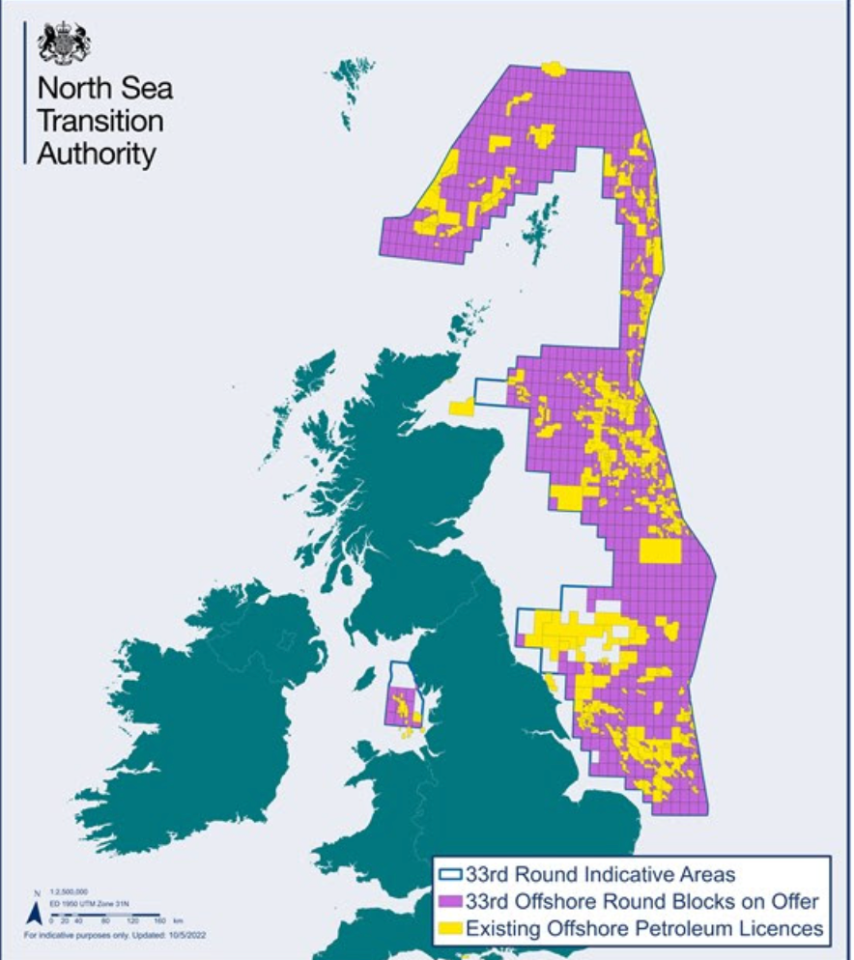Licensing round launched for new North Sea oil and gas projects

The latest licensing round for oil and gas development and exploration has been launched, paving the way for new projects in the North Sea to bolster domestic supplies.
Energy watchdog the North Sea Transition Authority (NSTA) is inviting applications for licences to explore and potentially develop 898 blocks and part-blocks in the North Sea, which may lead to over 100 licences being awarded.
This will be the 33rd oil and gas licensing round, with domestic fossil fuel generation being a key part of the UK’s push for energy independence, outlined in its supply security strategy launched earlier this year.
The application period will run until 2pm on Thursday 12th January 2023.
It is expected that the first licences will be awarded from the second quarter of next year.
To encourage production as quickly as possible, the NSTA has identified four priority cluster areas in the Southern North Sea.
These clusters have known hydrocarbons, are close to infrastructure and have the potential to be developed quickly – and will seek to license these ahead of others.
Applicants will be encouraged to bid for these areas so they can go into production as soon as possible.
The average time between discovery and first production is close to five years and falling, according to NSTA analysis.
North Sea licensing round signals supply push
The licensing round is the latest chapter in the Government’s scramble to ensure secure energy supplies, with industry body Offshore Energies UK recently warning of dwindling supplies at established sites and the need to develop new projects.
Oil and gas currently contribute around three quarters of domestic energy needs.
As it stands, the UK relies on Norway and other overseas partners to meet half its gas needs and a third of its oil demand – a situation that will only be exacerbated without new sites.
Other measures recently announced include the NSTA licensing the Rough gas storage facility and encouraging operators to look again at reopening closed wells.
Production emissions from sites have been cut by more than a fifth between 2018 and 2021, with new developments tending to be significantly lower in emissions.
NSTA projections suggest the sector is on track to meet reduction targets of 10 per cent by 2025 and 25 per cent by 2027 – agreed in the North Sea Transition Deal in 2021.

The industry is also looking play a role in areas like carbon storage and hydrogen development.
Business and Energy Secretary Jacob Rees-Mogg welcomed the launch of the 33rd licensing round for oil and gas projects.
He said: “Putin’s illegal invasion of Ukraine means it is now more important than ever that we make the most of sovereign energy resources, strengthening our energy security now and into the future.
“Ensuring our energy independence means exploiting the full potential of our North Sea assets to boost domestic production – recognising that producing gas in the UK has a lower carbon footprint than importing from abroad. “
Dr Andy Samuel, NSTA chief executive, added: “Security of supply and net zero should not be in conflict. The industry has committed to halving upstream emissions by 2030 and investing heavily in electrification, carbon storage and hydrogen. Signs are promising so far – our first carbon storage round closed last month with 26 applications from 19 companies across all the areas we offered.”